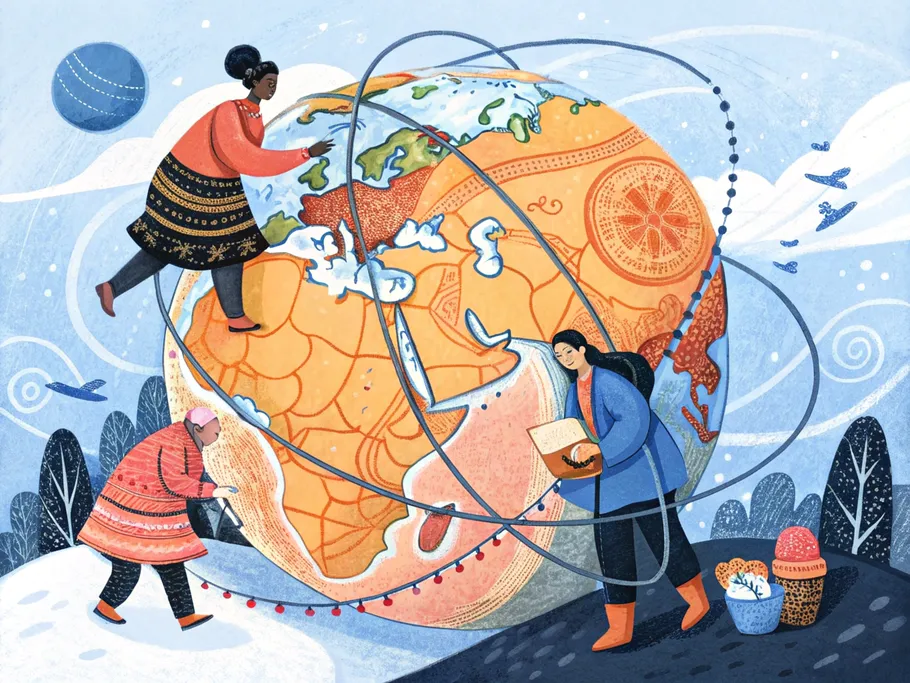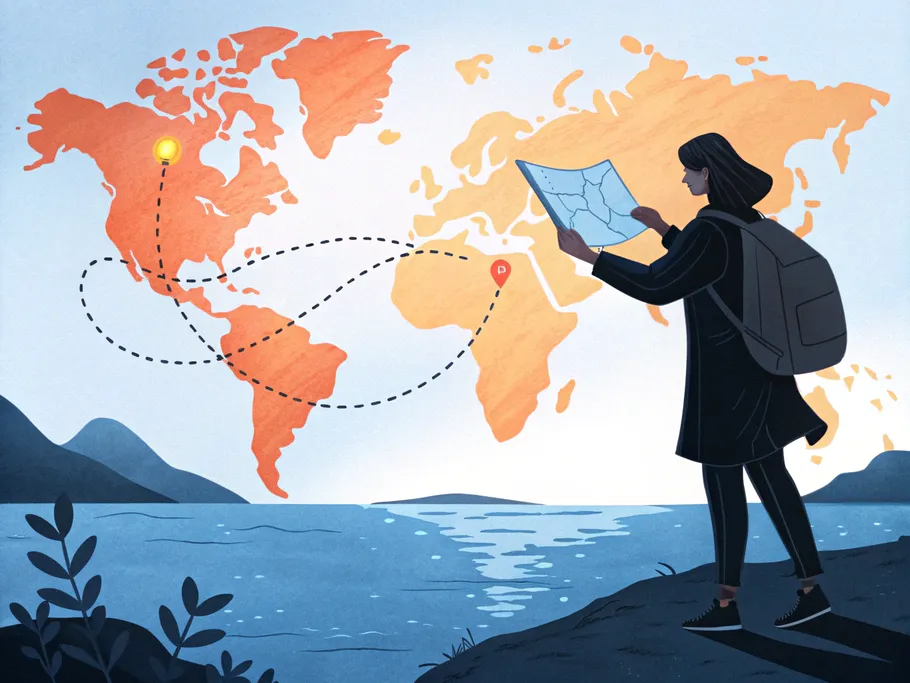Marketing With The Genius of Localization
Expanding globally sounds glamorous—like a brand-new Tesla rolling off the assembly line, destined for roads worldwide. But without localization, that shiny ride could end up like Google Glass—futuristic, ambitious, and utterly misunderstood.
Many entrepreneurs charge into new markets only to realize that what worked at home falls flat abroad.
McDonald’s mastered the art by serving McAloo Tikkis in India and Teriyaki Burgers in Japan, but Starbucks fumbled in Australia by assuming its American coffee culture would translate.
This three-part article is the playbook to successful global market entry:
Part 1—how to think global from the get-go,
Part 2—choosing the right market, and
Part 3—turning localization strategy into action.
Because in the world of international expansion, it’s not just about going big—it’s about getting it right.

Forget the old rulebook—and decide to expand globally from day one.
In today’s connected world, startups that delay global expansion risk fading into obscurity. The smartest businesses are going global by default, using tech, remote teams, and digital platforms to reach worldwide audiences. What if Netflix had limited itself to one country when it can stream globally?
And while staying local may feel safe, market saturation and local hiccups (hello, pandemic) can kill growth. You can scale across borders without a physical presence. All you need is the right approach to test, adapt, and conquer new markets.
Remember when Blockbuster laughed at Netflix’s digital model? That’s what happens when businesses expand the old way—first dominate local, then go global.
Stop asking, “Where can I expand next based on what I have already achieved?” Instead, ask, “Where does all my product fit, and how do I adapt it?”
The best entrepreneurs spot opportunity beyond their comfort zones—not in what’s familiar.
Expanding globally without understanding your customer is like flying blind. A Customer Journey Map (CJM) is your GPS—it tracks every touchpoint, identifying cultural and logistical gaps. How do customers find you? What influences their decisions? What needs tweaking?
McDonald’s doesn’t serve a Big Mac in every country. Instead, its McSpaghetti in the Philippines, and Paneer Burgers in India.
Understanding culture isn’t a trend—it’s a business advantage.
1. Where in the World Should You Go?
Location, location, location. Some businesses can go fully digital and sidestep the physical question, but others—especially in hospitality, retail, and logistics—need to be strategic about market entry. Demand dictates location, and accessibility seals the deal.
2. Culture: The Deal Maker (or Breaker)
Cultural missteps have sunk many expansions. Just ask Walmart, which struggled in Germany because it underestimated local shopping habits. Services involving human interaction—education, healthcare, hospitality—require even greater cultural sensitivity and localization tactics. Franchising can be a lifesaver, offering local expertise with a global framework.
3. Tech: Your Borderless Advantage
Information technology is the great equalizer, allowing businesses to scale services 24/7 across time zones. Fintech startups, SaaS platforms, and e-commerce giants use IT to bridge language barriers, customize user experiences, and streamline global operations.
4. Standardization vs. Customization: The Balancing Act
Starbucks fumbled in Australia because it tried to impose an American coffee culture instead of adapting to local preferences. On the flip side, Apple’s product design remains largely universal, with minor tweaks for different markets.
The key question: What aspects of your service should be standardized for efficiency, and what should be tailored for local success?

Ready to expand? Here’s the deal: to win globally, you’ve got to adapt locally. Don’t overcomplicate it.
Just take what’s worked, tweak it for new markets, and execute with precision. Here’s how:
1. Replicate What Works
Don’t reinvent the wheel. Find markets where your existing strategies can work—whether it’s a social media campaign, a pricing model, or a customer acquisition tactic. If Instagram works for you in one country, find another market where Instagram’s buzzing too and bring your strategy along for the ride.
2. Understand the Local Competition
Before you launch, map out not just your direct competitors but every possible option your customers could consider—indirect competitors, substitutes, or even doing nothing. The more you know about their decision-making process, the better positioned you are to swoop in.
3. Steal Competitors’ Customers
It’s not just about new users; it’s about converting the ones who already exist. Understand why they’re unhappy with their current product and show them how yours solves their problems. If you can highlight your key differentiators and offer a superior experience, those users will be yours for the taking.
4. Take On the Big Dogs
Be bold—if you’re not the market leader, act like a challenger. Use one of these aggressive strategies to gain market share:
5. Understand Why People Switch
What makes your product irresistible? Find the gaps in your competitors’ offerings and make sure your product hits the sweet spots.
A killer Unique Selling Proposition (USP) isn’t about being better—it’s about being different in a way that matters to your target audience.
6. Navigating Emerging Markets
Don’t rush in without research.
Understanding the DEPEST (or DESTEP) model is crucial for localization because it helps you navigate the broader factors that shape local markets.
The six forces—Demographic, Economic, Political, Ecological, Socio-Cultural, and Technological—provide key insights into local preferences, purchasing behaviors, and potential barriers.
Emerging markets can be tricky, so understand the lay of the land:
Success won’t come from copying—but it can come from adapting products for international markets the right way.

Expanding into new markets is like walking into a room full of strangers—you want to make a good first impression, but you also don’t want to trip over your own feet.
Here’s a streamlined, action plan to help you navigate the chaos of market entry without embarrassing yourself.
Before you dive headfirst, make sure you do your homework. This means understanding local culture, buying habits, and even quirks like how people format dates (you’ll thank us later).
Key things to dig into:
Localization isn’t just about changing a word here and there—it’s about truly adapting your product to the local culture. A generic product might work in your home country, but in a new market, you need to make it personal.
What to do:
Every market has its own rulebook. Don’t ignore local laws or data regulations. For example, the EU’s data localization laws require businesses to store data locally. Get caught out? Huge fines.
Invest in strong infrastructure to comply with local standards, and keep your customers’ trust intact.
When in doubt, team up with the locals. Forming partnerships can smooth out the bumps and build credibility in unfamiliar markets.
What works: Local Business Alliances, or Localization Experts – firms that specialize in adapting content and products to meet local needs. They’ll save you from embarrassing gaffes.
Testing the waters digitally is cheap, fast, and low-risk. You can use social media and e-Commerce to test your ideas, get rapid feedback, and adjust as you go.
Localization in marketing isn’t just a trend; it’s a must.

Tailor your marketing to speak the local language—literally and figuratively. At the least, this will get you:
Don’t just grow—grow with flair!
Envision a global organization, embrace the local culture, adapt your strategies, and create something that feels native to newer and newer markets. Make sure you don’t trip on your way in, and you’ll change the world in your own way.

Email subscription is available ONLY TODAY (oh, okay, and tomorrow).
Surely, we respect your inbox! Unsubscription works every day.

We’d love to tailor your experience — which of these best describes you?